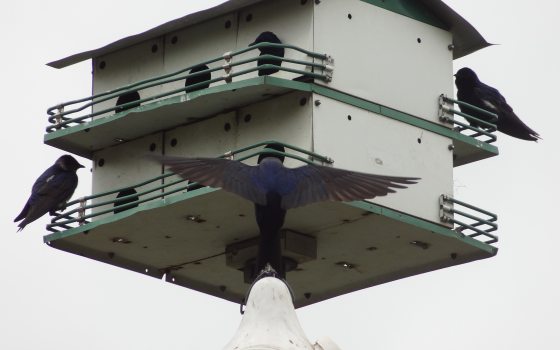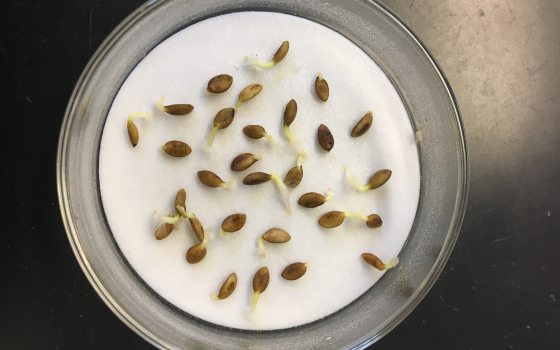While Longwood Gardens is primarily known for its floral and botanical displays, it also hosts a large, thriving, and growing colony of purple martins—North America’s largest swallow. The nest boxes that attract these birds are located in the Idea Garden. Here one can get a “bird’s eye” view of the daily activities of these birds as they build their nests, incubate their eggs, and feed their young.
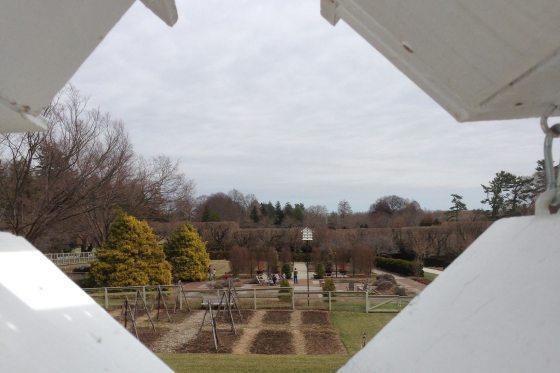
Bird's eye view of the Idea Garden from purple martin nesting boxes. Photo by Bill Haldeman.
In the spring of 2014 several new martin houses and gourds were added to those already existing in the Idea Garden, expanding the number of available nest sites. And the martins have responded, with volunteers counting over 36 pairs of martins nesting in the Gardens this year.
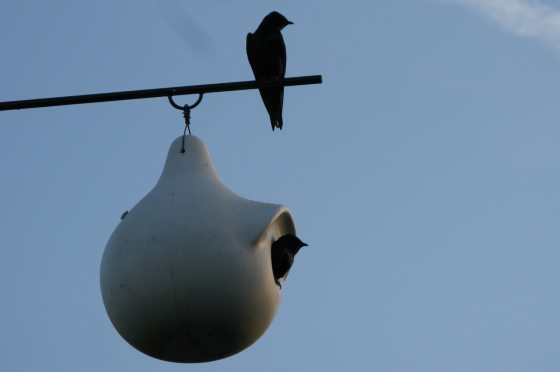
Taking a rest from the hungry youngster. Photo by Adam Cressman.
By mid-June martin babies are hatching from their eggs. These young martins will stay in the nest for close to a month, while busy parents constantly feed them insects. By the end of June the martin houses are alive with young martins hanging their heads from the entrance holes, chirping loudly and begging for food from any passing adult. But only their parents will feed them; there is no altruism in purple martin society.
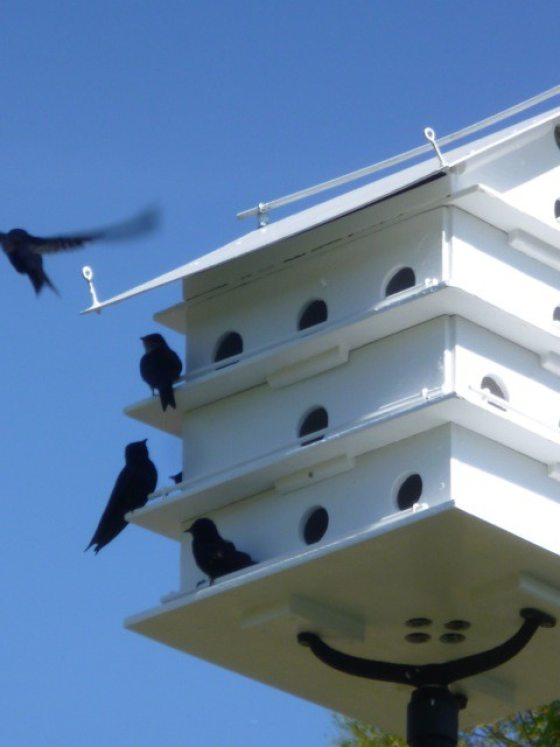
Taking flight. Photo by Bill Haldeman.
When the young martins outgrow their nests, they take flight right from the nest box and fly surprisingly well. Their parents stay with them and will guide them to a safe perch high in a dead or living tree. Here the young birds will watch their parents catch flying insects, and learn to hunt on their own. They are dependent on their parents for almost two weeks after leaving the nest.
Unlike most songbirds, purple martins bring their young back to the nest every night to sleep. This is a good time to observe much excitement in and around the martin colony, with most of the activity usually occurring an hour before dusk.
Visitors to the Gardens during the first few weeks of July will be rewarded by some pretty raucous behavior as young martins try to negotiate the air on untested wings as they return to the nest sites where they were hatched and raised. Purple martin parents know their own young and will guide them to the proper nest in the martin house.

The delightfully chaotic antics of adult and young purple martins returning to their houses. Photo by Bill Haldeman.
This year Longwood Gardens will highlight this exciting natural history event with a special gathering in the Idea Garden on the nights of July 11 & 12, so that visitors can enjoy this spectacle. I will be on hand to discuss these delightful birds and their history at Longwood.
Within ten to fifteen days after the young leave the nest, they will start their long flight back to Brazil, where the birds spend the winter. By the first or second week in August the martin houses at Longwood will be silent, and we’ll have to wait until April of next year before they return once more.
